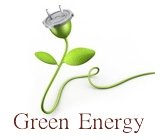Solar Powered Water Fountains
Which Solar Garden Fountains Work Best?
Not All Solar Powered Water Fountains are created equal. Hot tips for buying the perfect solar powered garden fountains for your needs.
Solar Water Fountain
When purchasing solar fountains here are some things to keep in mind in order to get the results you want.

Aside from the fact that they're beautiful, garden water fountains can be a beneficial inclusion to your outdoor landscape.
Adding a solar pump and fountain to still water features, like ponds, creates water movement. Water movement discourages mosquito hatchlings and increases negative ions (the good kind) which makes an atmosphere more restful and energizing. Furthermore, fountains incorporate oxygen into water creating an eco system in which fish and plants can thrive.
Solar power is available only during the day. Having said that, batteries can be included to store the solar energy so that it can be used at any time you choose.
Adding batteries to a solar water fountain has a double sided effect. On the one hand, they allow you to run the pump at times when the sun isn't shining and operate a wider variety of spray types. On the other, they cost more, require more maintenance and add to environmental impact.
Solar Powered Water Fountains Without Batteries
Solar fountains that operate directly from the solar panels (no batteries) will function at a variable speed depending on how much sunlight is striking the panel at the time. Lots of sun = Lots of water movement.
A solar powered pump that is powered with just the solar panel and has no capability to store the energy (no batteries) will function at a variable rate through the daytime hours. Assuming that the day is a sunny, mid summer day, a solar pump will begin pushing a trickle of water early in the day. As the sun rises and the intensity increases so will the flow rate. At mid-day the fountain will function at its optimal level, probably for 4 - 6 hours (depending on your latitude). In morning and late afternoon hours,
the pump will operate at a decreased level and when no sun strikes the panel the pump will not operate at all.

Although you can make most fountains work with solar power, trickle fountains are the simplest and least affected by the variations in flow volume that the simple panel/pump assembly experiences.
Trickle fountains (pictured right) and overflow fountains (pictured above) have a simple pattern that looks as good at low flow rates as at higher rates. The velocity will increase and decrease depending on how much light falls on the panel and will stop completely in very low sunlight conditions.
If you only want your garden fountain to function during sunny daytime hours (which is when we spend most of our time outdoors) and are not concerned about the velocity of your fountain output, a panel and pump assembly without batteries will be suitable for the task.
Eliminating batteries from the equation saves money, maintenance and hassle.
Some solar products must have batteries in order to
Tip
The fewer components in a system, the fewer things there are to go wrong.Eliminating the batteries makes the device more environmentally friendly, less expensive and practically maintenance free.
Solar Powered Water Fountains with Battery Backup
Some spray patterns need a more constant pressure to hold their form and do not do well with variable water velocity. The bubble spray pattern, for instance, will only hold it's form if a steady and fairly forceful stream of water is supplied to it.In order to supply that energy a battery is needed.
The battery will not only store the solar energy but will also deliver the energy to the fountain at a more reliable voltage and over a longer period of time. A charge controller will regulate it still further so that sensitive devices are not damaged by high or surging power levels.
A solar water fountain with batteries can add sizzle to a ho-hum patio, garden or pond without the concerns about plug ins and electrical cords. Just place it where you want it and bring your landscape to life.
Advantages of Solar Powered Water Fountains
- The sound of a solar powered fountain mutes intrusive neighborhood noises like traffic.
- Green solar power runs the pump.
- Draws butterflies, birds and beneficial bugs.
- Increases negative ions for a positive boost.
- Easy installation.
- No major plumbing and electrical work.
For night time garden ambience, add some beautiful solar outdoor lights to to your yard to create a stunning nightscape.
Visitors to our Solar Powered Water Fountains page may also be interested in the following pages.
Solar Power for Homes
Solar Powered Water Pump










